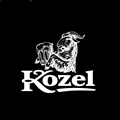Kangaroos and wallbies

Kangaroos, wallabies and their relatives (such as walaroos, bettongs or potoroos, all of which are collectively called macropods) are among the most successful groups of marsupials. Every third marsupial species in Australia is a macropod! They live nearly everywhere, from rainforests through the arid outback to rock cliffs; on the ground, in trees, as well as in underground burrows.
 Red-necked wallaby, photo: Petr Hamerník, Zoo Praha
Red-necked wallaby, photo: Petr Hamerník, Zoo Praha
NOT ALL ARE ALIKE
Macropods include species that weigh barely half a kilogram to eighty-kilogram kangaroo “giants” who tower over humans when standing upright on their hind legs. Some have a muscular stiff tail which they use as a third leg when resting and moving slowly. In others, the tail is extremely long and resembles a monkey’s tail; yet others have a thin and bald, or even winding tail! However, all but one, have a common feature, which is that they hop on their two hind legs. This is even true for tree-kangaroos; although they climb in the branches, they hop on their hind legs when on the ground, albeit somewhat clumsily.
LEGS LIKE A SPRING
For kangaroos and wallabies, hopping requires hardly any effort at all. The large and flexible tendons in their hind legs act like giant springs. Upon impact they are compressed and subsequently catapult back, giving the kangaroo a springboard for the next rebound. This economical way of moving allows kangaroos to run at speeds of up to 70 km/h and a single jump can cover up to nine metres! For slow movement on the ground – for example, when grazing – kangaroos hop on “five” legs, using their tail as the fifth limb
.
A KICK WITH BOTH FEET
Kangaroos have very strong hind legs and when they lean back on their tail and swiftly shoot both feet forward, they can deal a very painful – sometimes even deadly – kick. It is an effective defence as well as part of male-male fights for females. During these scuffles, the opponents slap and push with their front legs and kick into the belly and chest.
BIRTH OUT OF THE ORDINARY
All macropods have a short gestation period – at most 38 days. The new-born baby is tiny and very imperfectly developed; in fact it is only a foetus. Despite this, it has to pull itself up its mother’s belly and into the pouch, find a teat and attach itself firmly. The mother does not help during this. Before giving birth she just thoroughly cleans the pouch and then licks the baby occasionally during its journey, perhaps to protect its translucent thin skin from the sun.
GROWING IN A POUCH
A kangaroo baby (which is called a joey) spends its first months in the pouch, the entrance to which is kept firmly closed by strong clamping muscles. It is only when the baby is big and strong enough that it will start to peek out of the pouch and later venture out for longer and longer periods of time, eventually leaving it forever. Even then, however, the mother will suckle it for a while – and since the teats are hidden inside the pouch, the baby must put at least its head into the pouch when it wants to feed.

ZOOPRAHA.CZ
Contacts
- The Prague zoological garden
U Trojskeho zamku 120/3
171 00 Praha 7
Phone.: (+420) 296 112 230 (public relations department)
e-mail: zoopraha@zoopraha.cz
Others








